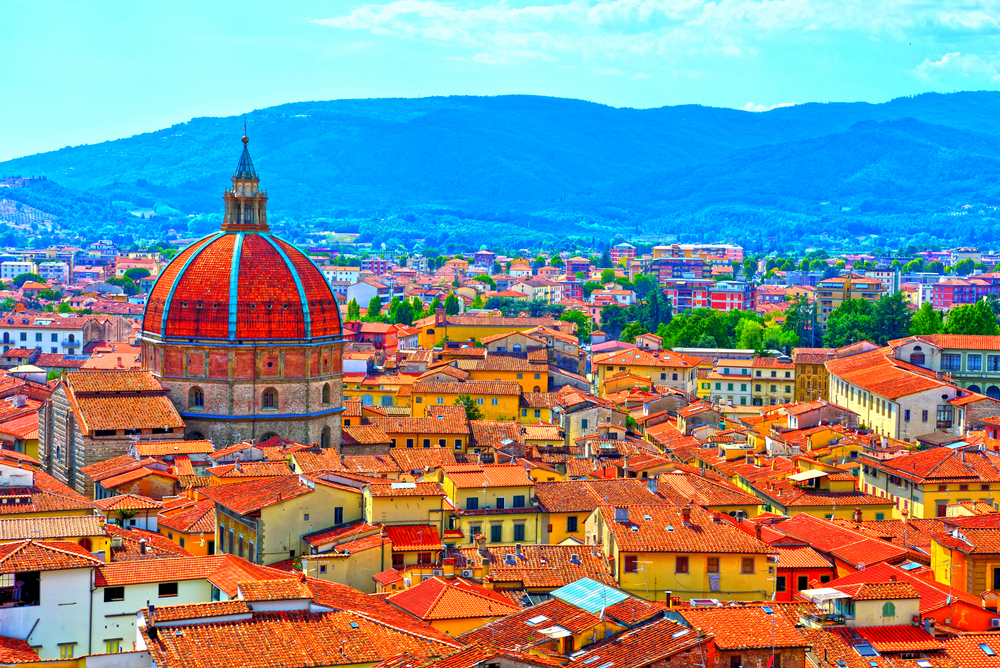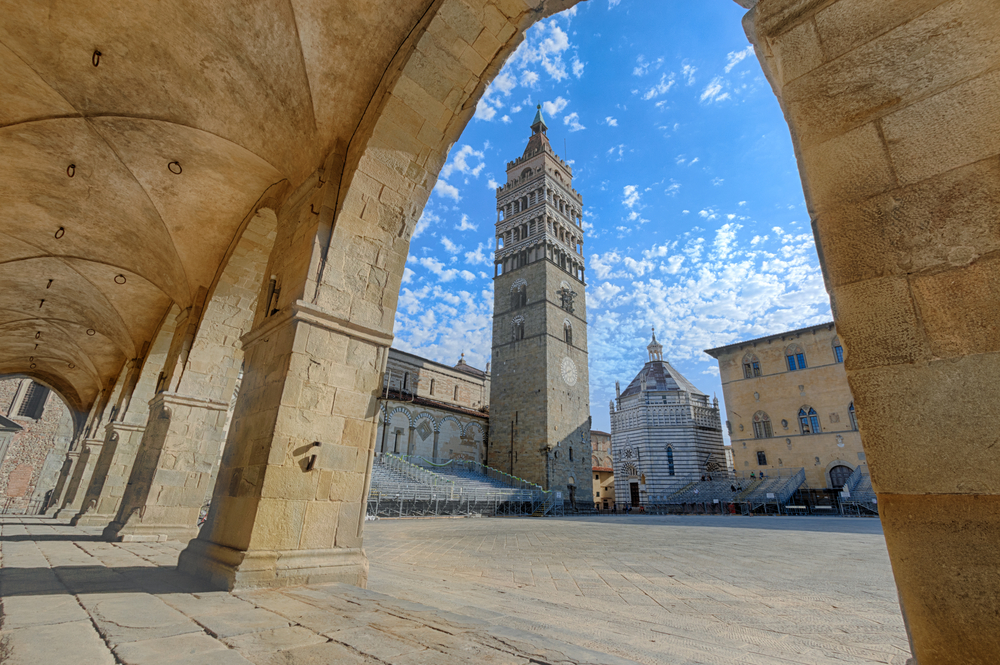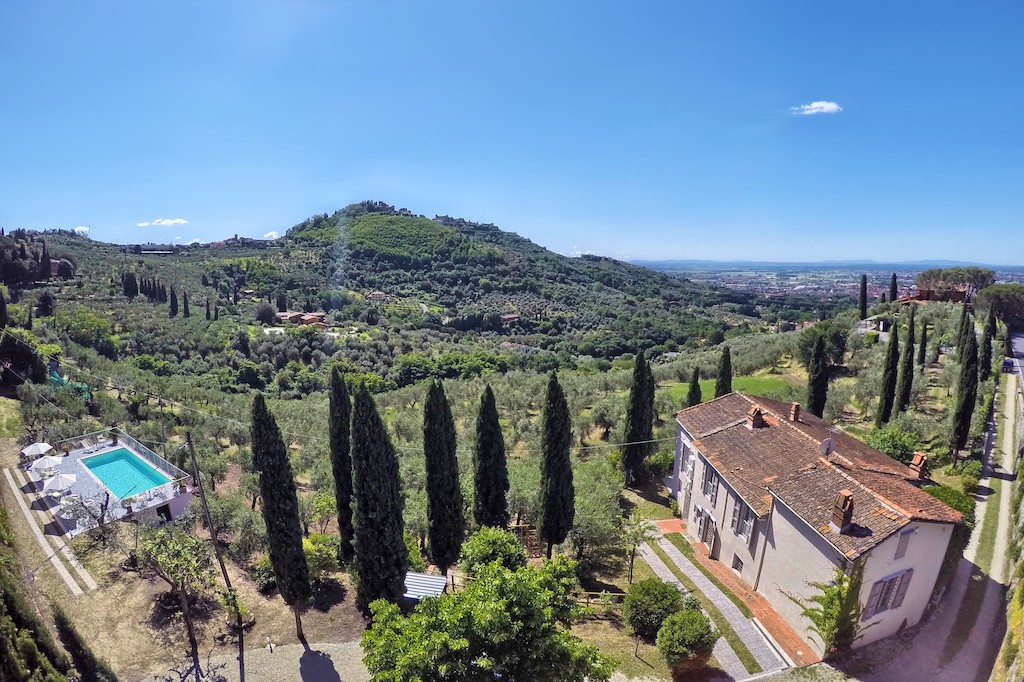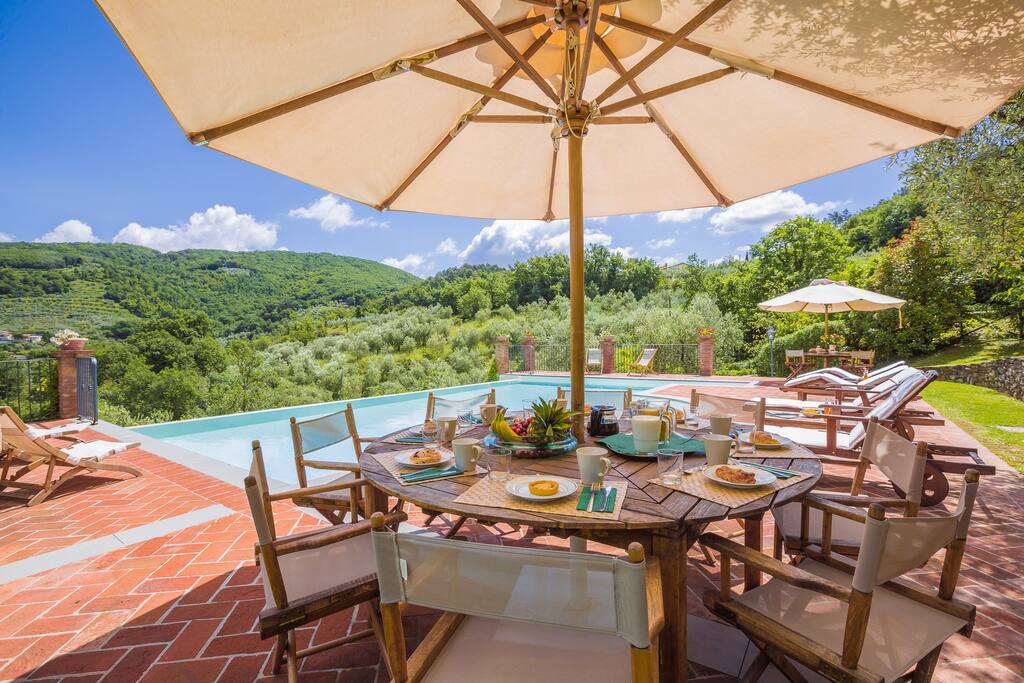Travel guide to Pistoia
Bookings For You, Inspiration, Italy, Perfect for Couples, Tuscany
Pistoia is one of Tuscany’s hidden gems. The city of Pistoia is a stone’s throw from both Florence and Lucca, and yet visited by far fewer tourists. It is situated in the province of Pistoia which has a rather varied landscape that alternates between flat valleys, rolling hills and much more mountainous areas. It is even possible to go skiing in the Winter months here, at resorts such as Abetone, Doganaccia and Val di Luce, whilst in the Summer the mountain peaks of Monte Gomito and Monte Cimone are perfect for hiking.
The wider area is famous for its plant cultivation and also for its chocolate production. Plants and flowers grown here are exported all over the world. And it’s also home to a number of spa towns such as Montecatini Terme and Monsummano.
As with most of Tuscany’s towns and cities, the city of Pistoia has had a long and rich history. Occupied in Roman times, it was close to the battle in which Cicero’s enemy, Catiline, died. It prospered in Medieval times when it was a popular pilgrimage site amongst pilgrims who came to pay their respects to Saint James. Sadly, the city declined somewhat in the 19th century. But more recently, in 2017, the city was proclaimed European City of Culture, a title which it thoroughly deserved.
What to see and do in Pistoia
Pistoia is much smaller than its more famous neighbours. It’s just half the size of Lucca and a fraction of the size of Florence or Siena. But we think it certainly packs a punch when it comes to ts art and architecture!

Start your visit in the main square – the Piazza del Duomo. Here you will find the Cattedrale du San Zeno. Head inside to admire the silver altar covered in a relief depicting stories from the bible. Also situated in the piazza is the Palazzo Comunale (town hall). This is now home to an excellent museum containing a collection of Pistoian art than spans several centuries from the 13th to the 19th. Remember to look at the interior walls of the museum itself since these are also covered with some beautiful frescoes. Also nearby is the Magistrate’s Palace. This boasts a beautiful courtyard, covered with frescoes. Three rows of benches are still standing and enable visitors to almost experience the atmosphere of a High Court. Also of note are the Palazzo Pretorio and Palazzo dei Vescovi. And, of course, there is the Baptistery and spectacular bell tower.
Incidentally, you will also find the Tourist Information office in this square should you need any assistance.
Near to the main square is the smaller Piazza della Sala. This is absolutely charming. Back in the Lombard era, it would actually have been Pistoia’s main square and is where the Palazzo del Gastaldo once stood. However, once the administrative powers of the city moved to the Piazza del Duomo, it became a market area and home of a number of small artisan shops. The adjacent Piazzetta dell’ Ortaggio serves a similar purpose. In the centre of the Piazza della Sala stands a well to which was added a statue of a lion in the mid 16th century to reflect Florentine rule over the city. Ever since, this well has been known as the Pozzo del Leoncino.
A short stroll from the main piazzas is the Basilica of the Madonna dell’ Umita. This has an impressive dome, reminiscent of that of the Duomo in Florence and designed by the eminent Florentine artist and historian, Vasari. The dome is actually very difficult to see close up and easier to spot from a distance.

Other religious buildings of note in Pistoia include the Church of San Giovanni Fuorcivitas. It boasts a striking black and white marble exterior. The small, high windows were probably originally designed for defensive purposes but now mean that the building is quite dark inside. However, you can still distinguish some beautiful frescoes inside along with the 13th century pulpit. Just beyond this is the Church of San Filippo Neri and the Fanroniana Library. Also of note is the Church of Sant’ Andrea (inside which you will find a magnificent pulpit by Giovanni Pisano) and the Church of the Tau which is filled with beautiful frescoes.
And finally, we recommend you take the time to visit the Ospedale del Ceppo during your time in the heart of Pistoia. This is an old hospital and remains a medical building to this day. Look out for the brightly coloured terracotta reliefs – Robbiano frieze – that adorn the exterior.
If you are travelling with children, you may also like to head 10 km out of the city to Pistoia zoo or to the Pinocchio Park in nearby Collodi. The zoo has an excellent reputation and is home to over 400 different animal species. The Pinocchio Park is located in the town where author Carlo Lorenzini spent much of his childhood. In fact, he liked the town so much that he changed his name to Carlo Collodi! The park brings the magic of this famous story to life. However, it dates back to 1956 and, arguably, some areas could do with a bit of a refresh. We think it’s rather charming but don’t expect any Disney magic!
Or, serious art lovers may want to pay a visit to the Fattoria di Celle, 5 km to the west of Pistoia. Here, at this stunning property, you will discover an extraordinary private contemporary art collection belonging to local businessman, Giuliano Gori. There are over 70 installations scattered throughout the estate. Please note that guests wishing to visit need to make a reservation at least 6-8 weeks in advance.
Events in Pistoia
A market is held every Wednesday and Saturday morning in Pistoia’s main square, spilling into the surrounding streets.
Pistoia plays host to a number of events each year. The most important of these is the annual palio – Giostra dell’ Orso (Joust of the Bear) – held in Pistoia’s main square on 25th July to coincide with the feast day of Pistoia’s patron saint, St Jacob. The event features a number of processions with residents dressed in Medieval costumers and a series of tournaments between rival neighbourhoods in the city.

Pistoia also plays host to a literary festival each Spring and a the Pistoia Blues Festival each July. The latter attracts talented musicians from all over the world. In the past, artists such as Jimmy page and BB King have performed as part of the festival.
How to get to Pistoia
By car: Pistoia is easy to reach by car, sitting just off the main motorway that runs between Pisa and Florence. Whilst driving in any Italian city is arguably not for the feint hearted, Pistoia is easily manageable. Just pay attention to the ZTL zones as entering these without a valid permit will incur a hefty fine. There are plenty of public car parks.
By bus: The Blubus bus operator runs a regular bus service to Pistoia from Florence and to and from the surrounding towns.
By train: Pistoia has a train station, situated about a 10 minute walk from the historic centre of the city.
By air: Florence is the nearest airport to Pistoia and is approximately 40 km away. Alternatively, Pisa airport is just 70 km away.
Restaurants in Pistoia
La Bottegaia is a charming restaurant just off the main square in Pistoia.
Where to stay in Pistoia
Villa Mona is a stunning 5 bedroom Tuscany villa situated just a 20 minute drive from Pistoia. With a private heated swimming pool, satellite TV, table tennis, billiards and table football, there is plenty to keep you entertained when you’re not exploring Pistoia itself.

Alternatively, Villa Ronco is a beautiful 7 bedroom Pistoia villa rental located just a 20 minute drive from the heart of the city. The owners even live in the very heart of the city so, if you’re looking for top tips about what to see and do in Pistoia, you’ll be able to speak to the experts!

Take a look at the other Pistoia villa rentals available from Tuscany villa rental specialists, Bookings For You.


